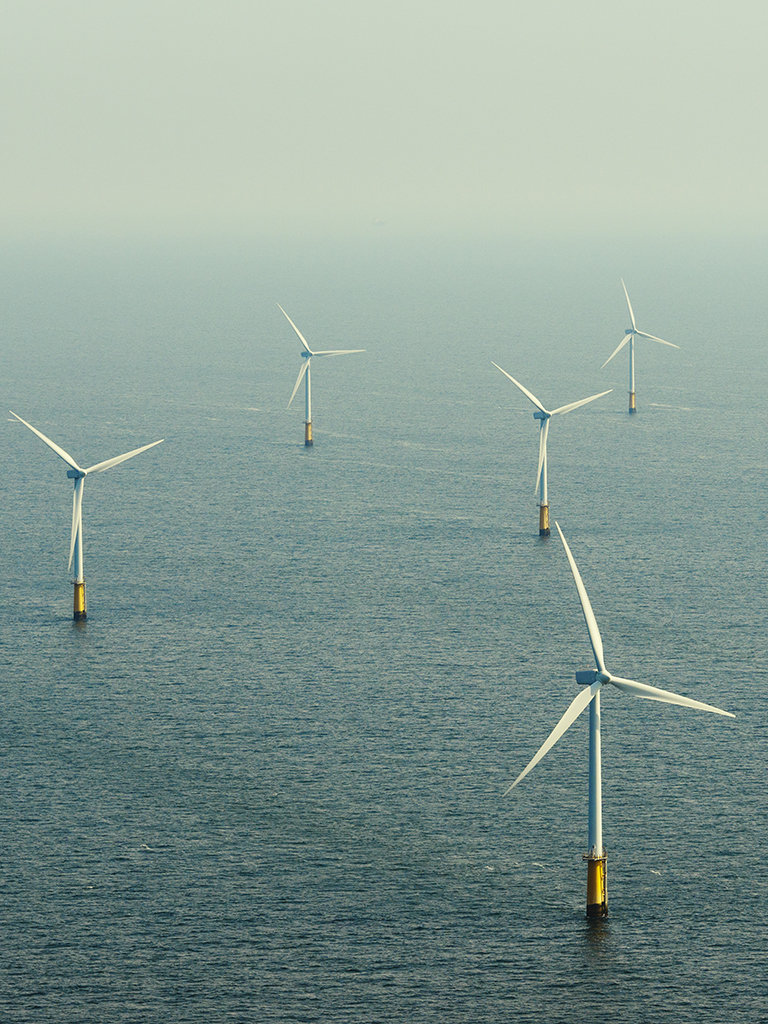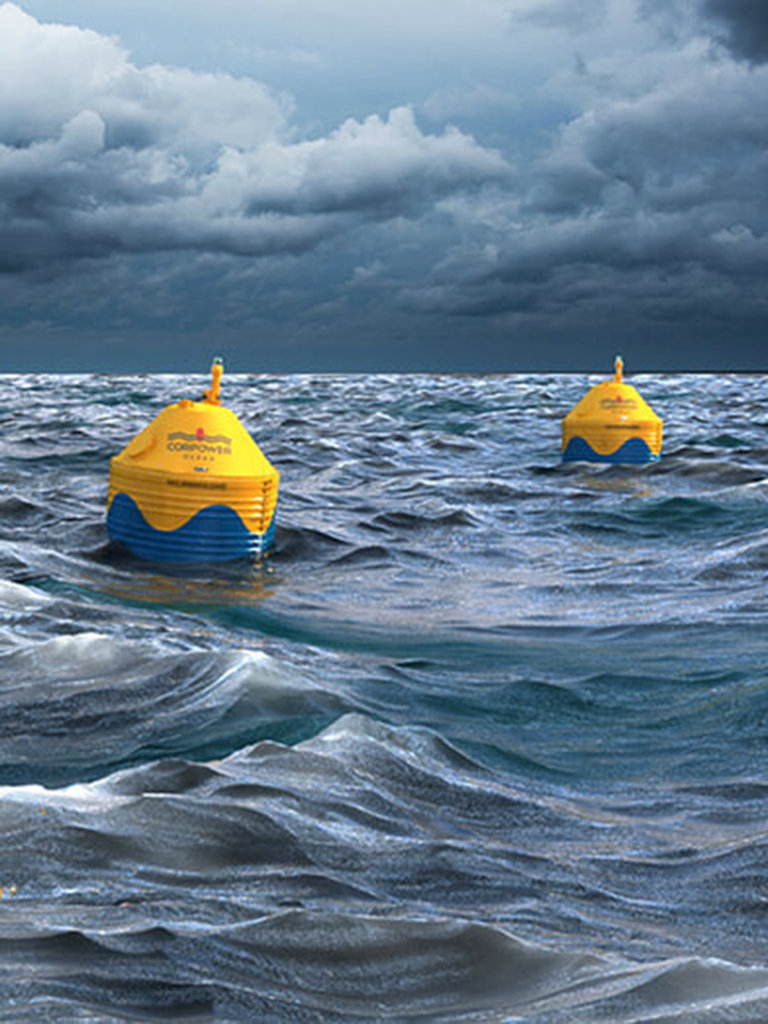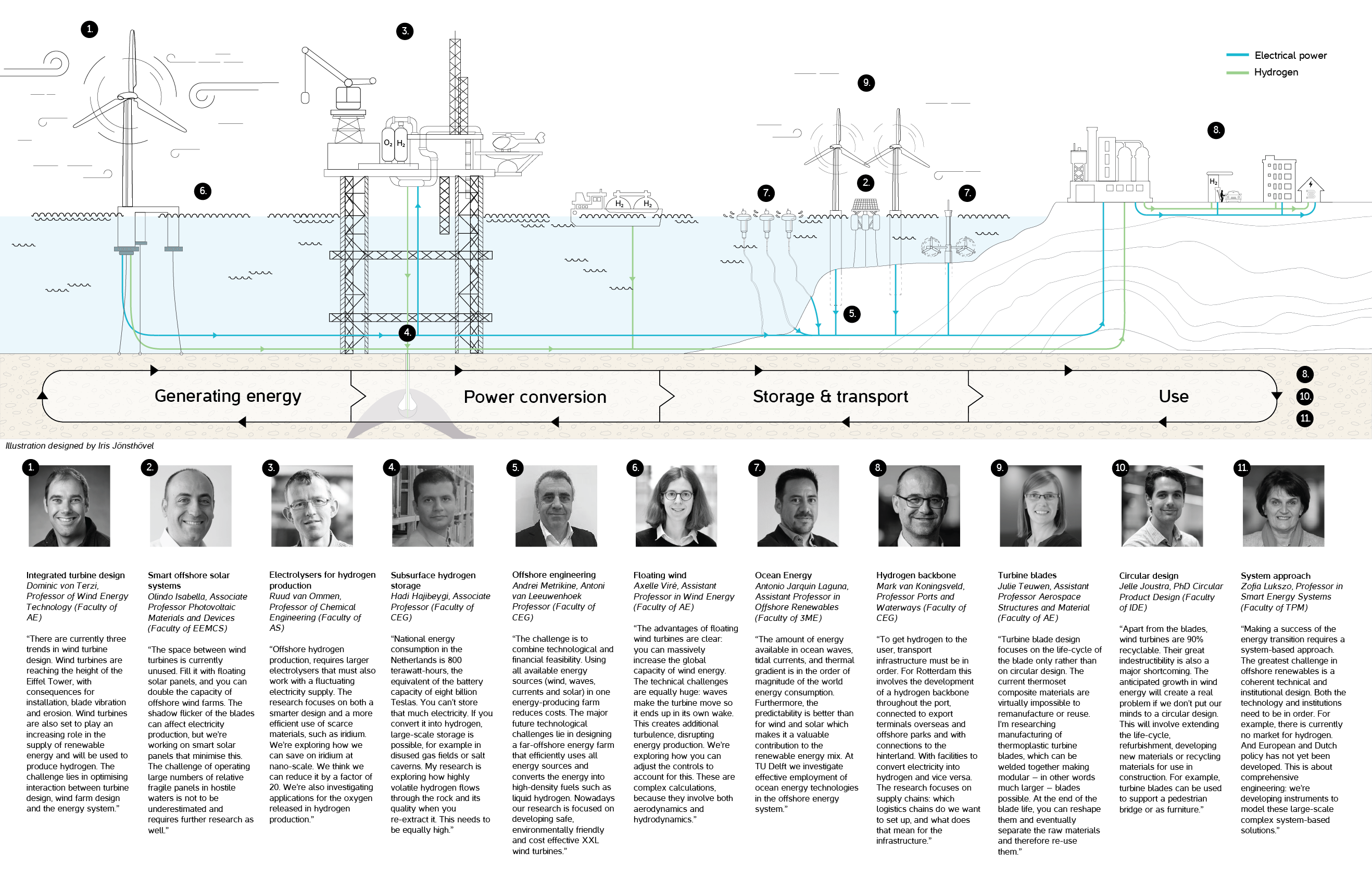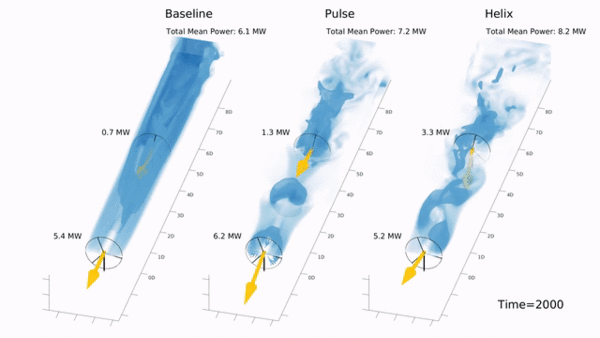
Towards a renewable offshore energy system
By Jurjen Slump
The energy transition is now well underway. By 2050, virtually the whole of the energy supply will need to be renewable and carbon-neutral. That is a huge task. It is not only domestic users that need to go gas-free; SMEs, industries, road traffic, public transport and aviation will also have to shift towards a renewable source of energy. An electric vehicle or hydrogen-fuelled aircraft is not enough: the electricity or hydrogen needs to be generated in a sustainable, green way. With wind, solar, tidal or wave energy.
The source of a sustainable energy supply can be found offshore. A shortage of space on land and increasing demand for renewable energy call for the development of large-scale fixed and floating offshore energy systems in both shallow and deep waters. A view of the future is large offshore wind farms with floating solar panels between them producing electricity which is transmitted directly to shore or converted to hydrogen by factories on artificial islands which can be stored in situ in salt caverns or disused gas fields and later transported ashore via ships or former gas pipelines. All this while preserving the marine environment.
EU Strategy on Offshore Renewable Energy
This November, the European Commission proposed to increase Europe’s offshore wind capacity from its current level of 12 GW to 300 GW by 2050, complemented with 40 GW of ocean energy and other emerging technologies such as floating wind and solar. This ambitious growth will create new opportunities for industry, create green jobs across the continent, and strengthen the EU’s global leadership in offshore energy technologies.
To turn this ambition into reality by 2050, we will need to be capable of designing, building, maintaining and dismantling these kinds of systems in a circular way, with state-of-the-art re-use and recycling of materials. It is a huge task, but also the only way of meeting the climate targets without the production of these structures being at the expense of the environment and raw materials.
Already, offshore renewable energy is a true European success story. We aim to turn it into an even greater opportunity for clean energy, high quality jobs, sustainable growth, and international competitiveness.
Frans Timmermans, Executive Vice-President for the European Green Deal
Shaping the future energy system
Research at TU Delft is characterized by an interdisciplinary and multidisciplinary way of thinking that transcends the disciplines of science, technology and design. This is nowhere more obvious than in the field of offshore renewables: Delft has all the expertise needed to shape the technology of this future energy system in its entirety.
This not only involves the integration of different subsidiary systems (production, transmission, conversion into hydrogen, storage and shipping) as a smart way of coping with fluctuating electricity production but also the preconditions for achieving this. Take, for example, the development of large-scale floating structures, integration within the energy network and circular design of the various components.
Integrated approach
This integrated, interdisciplinary approach ensures that the challenges in terms of the energy transition and circularity can be tackled together. By designing systems that ultimately go on to have a high-quality second life, we are not only enabling the large-scale production of renewable energy, but also contributing to the circular economy.
There are still countless technological and scientific challenges that need to be resolved, from the design of new, reusable composites for turbine blades to the underground storage of hydrogen. Researchers in almost all faculties are working on these. But they all agree on one thing: a sustainable offshore energy supply is technologically achievable by 2050.
The following visual provides a summary of the current research at TU Delft, illustrated through several innovation projects, in which new technology is being tested in partnership with the market. We also take a closer look at the increasing importance of green hydrogen and provide a sneak preview of the next best thing in the field of renewables: ocean energy.

Offshore innovation projects
Hollandse Kust Noord
A new wind farm is rising from the sea 18.5 kilometres off the coast of Egmond aan Zee. It will generate enough energy to supply over one million households with green power. The Hollandse Kust Noord wind farm is being built by Crosswind, a joint venture of Shell and Eneco. TU Delft will test some of the innovations relating to so-called ‘wind farm control’. The tests concern optimum designs for offshore wind farms and methods for maximizing energy production.
“Wind turbines create wake, a strong backward air current that interferes with energy production in the turbines behind them”, explains Jan-Willem van Wingerden, Professor of Data Driven Control of Wind Energy Systems. He has developed technology that not only shortens the wake, but also changes its direction so that it does not blow towards other turbines.
This so-called helix technology can “substantially” increase the amount of energy generated. It also allows turbines to be built closer together, resulting in lower costs as well as higher yield.
Wind farm control is a matter of advanced control technology. It relies on algorithms and machine learning – Van Wingerden’s domain. “This is a unique opportunity to test something completely new in a commercial setting”, he continues. “It will greatly accelerate the developmental phase of this new technology.”
The wind farm needs to be operational by 2023 and the helix technology will be tested before 2025. Crosswind will also be testing other innovations, such as a floating solar park, battery storage, generation of green hydrogen and the combination of these systems in order to guarantee a continuous supply of energy.
GROW - Growth through Research, development & demonstration in Offshore Wind
GROW is a joint research programme in offshore wind that initiates research and accelerates innovations. The consortium includes around 20 leading and committed partners that cooperate closely to conduct joint research. GROW strives to expand the role of offshore wind in the energy system and therefore has the following objectives:
- to reduce the cost level of offshore wind in the near and mid-term future
- to create added value of wind energy in the energy system and to further enhance its symbiosis with other sectors at sea (oil & gas, fishery, shipping, tourism, ecology and nature).
- to strengthen the Dutch offshore wind sector
TU Delft is one of the knowledge institutes within GROW and takes part in establishing new projects in collaboration with its industry partners with the aim to create impact. TU Delft is proud of leading the first GROW project called Gentle Driving of Piles with 15 partners since 2018. Read more about GROW.
Gentle Driving of Piles
How can you build foundations for offshore wind turbines while creating as little disturbance as possible? A new method known as Gentle Driving of Piles (GDP) is being tested on Maasvlakte. The method involves winding the piles into the ground instead of hammering them. This technique is not only more efficient, but is also more friendly to underwater life.
GDP is a GROW project, a joint research programme on offshore wind aimed at accelerating research and innovation.
Project in the spotlight: Gentle Driving of Piles
STEP4WIND
STEP4WIND aims to raise the level of commercial readiness of floating offshore wind energy through technological innovations throughout the entire supply chain. Floating wind turbines could be a game changer in terms of lowering the cost of offshore wind energy and breaking into new markets.

Hydrogen Street – The Green Village
The Green Village, the field lab for sustainable innovations on the TU Delft campus, is a vehicle for research into the possibilities of reusing the Dutch natural gas grid.
Network companies Alliander, Enexis Groep and Stedin have built a conventional natural gas grid to enable research into the use of hydrogen. The grid was built according to the current criteria and standards for natural gas, using existing materials and components. Building, testing and demonstrating this convertible gas grid will enable the chain parties to gain knowledge as well as practical experience and experience collaborating in preparing for distributing hydrogen via the existing infrastructure. More information can be found on thegreenvillage.org/projects/waterstofstraat
Start aanleg waterstofstraat bij de The Green Village
TU Delft spin-offs in the field of offshore renewables
GBM Works
This spin-off has developed a “silent” method of pile-driving at sea. It involves vibro-drilling, a technique in which monopiles for wind turbines are driven into the seabed by vibrating their ends. Thanks to this method sound screens are no longer needed to protect the local ecosystem. Visit GBM Works website.
Delft IMP
Delft IMP has developed “nano-coatings”: very thin atomic layers that can improve the efficiency of batteries. The technology can also be used to improve electrolysers for generating hydrogen. Using nano-coatings can lead to huge savings in expensive, scarce resources, such as iridium. Visit Delft IMP website.
Contact
Do you have any questions regarding research and innovation on offshore renewables at TU Delft? Please contact us:

